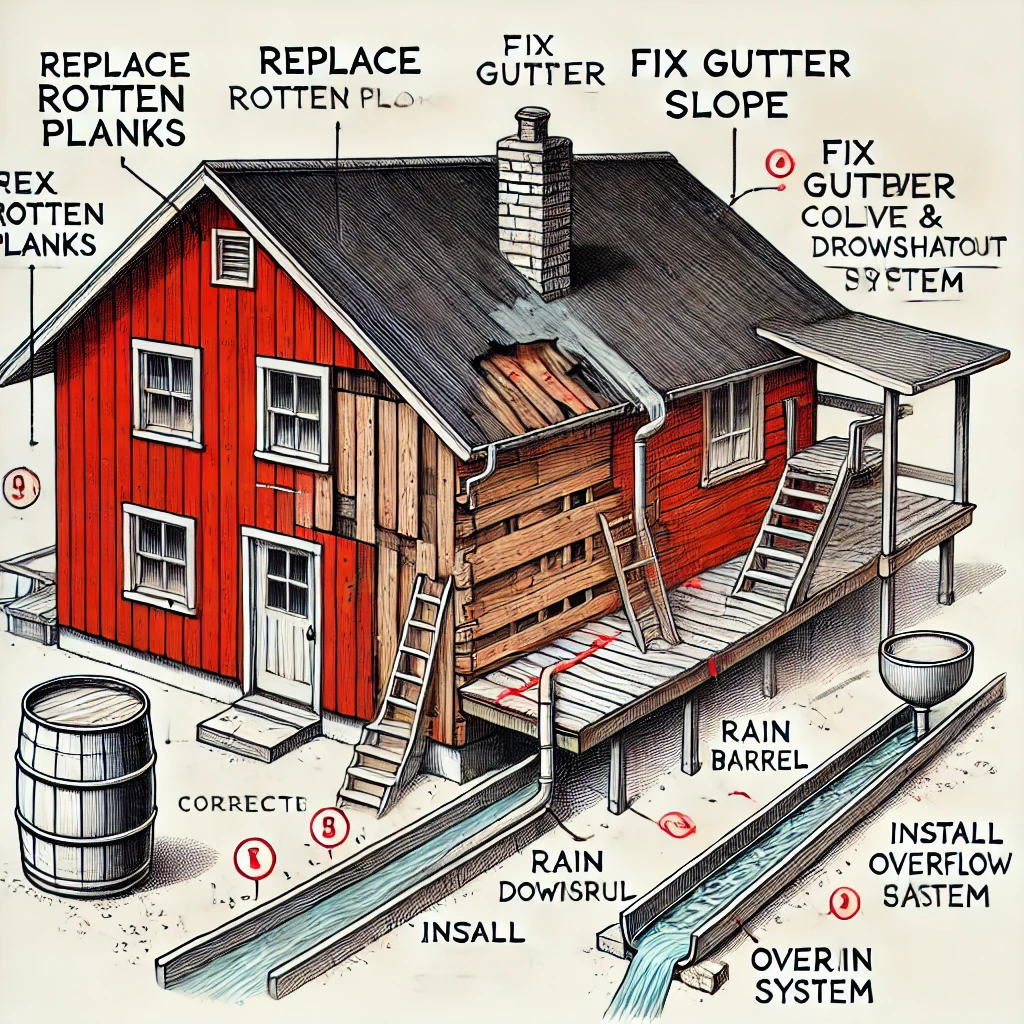
Adding a chart to your Angular Application with Google BigQuery data
by bernt & torsten
I recently worked on an Internet of Things (IoT) project on the Google Cloud Platform, one of the requirements was to create a data portal to show a few charts based on the data collected by the IoT devices. The IoT devices that were part of this project collected basic weather information on temperature and humidity.
Give some more information about the IoT setup, the IoT devices are connected to the Google IoT core that publishes the data to the Google Sub/Pub service, then a Google Firebase Function listens to a pub/sub event change. When the event change happens, the data received by the Google Firebase Function is pushed to a table created in Google BigQuery. The function also stores the IoT device name and date-time when the last data was collected to a table in the Firebase Realtime Database.
With the data stored in the Google BigQuery table, I could have used the Google Data Studio to create the charts for fun, as the use case was to have a portal and a mobile application that used the same Google Firebase backend.
I built a small web portal using Angular and hosted the portal with Google Firebase Hosting. I added another Google Firebase Function, which used the HTTP event to query BigQuery and serve the data to the portal page that shows a chart of the temperature data from Google query,
What I will show in this article is how we can code to display a chart in an Angular app, as shown in the chart below.
Let’s Get Started
First, I will give you some details on how I used Google Cloud, BigQuery and Google Firebase Functions to get the data for the chart.
Google BigQuery
In BigQuery, I created a table like a schema below – it’s a basic schema that is updated when new data measurement is created by the IoT device I used.

Google Firebase Function
To get the data from BigQuery to the chart we are going to create, and we need a Google Firebase Cloud function that queries the Google BigQuery table and returns the data to the Angular application we are going to create for our charts.
When publishing the Google Firebase Function, I do it as an HTTP request, and I can use an URL to invoke the function each time the data portal requests the data.
To use the code snippet below, you need the index,js, and package.json files to start. Here are an example of these files.
index.js file
const functions = require('firebase-functions');
const admin = require('firebase-admin');
const bigquery = require('@google-cloud/bigquery')();
const cors = require('cors')({ origin: true });
admin.initializeApp(functions.config().firebase);
const db = admin.database();
/**
* Query bigquery with the last 7 days of data
* HTTPS endpoint to be used by the webapp
*/
exports.getReportData = functions.https.onRequest((req, res) => {
const projectId = process.env.GCLOUD_PROJECT;
const datasetName = functions.config().bigquery.datasetname;
const tableName = functions.config().bigquery.tablename;
const table = `${projectId}.${datasetName}.${tableName}`;
const query = `
SELECT
TIMESTAMP_TRUNC(data.timestamp, HOUR, 'Europe/Amsterdam') data_hora,
avg(data.temp) as avg_temp,
avg(data.humidity) as avg_hum,
min(data.temp) as min_temp,
max(data.temp) as max_temp,
min(data.humidity) as min_hum,
max(data.humidity) as max_hum,
count(*) as data_points
FROM \`${table}\` data
WHERE data.timestamp between timestamp_sub(current_timestamp, INTERVAL 7 DAY) and current_timestamp()
group by data_hora
order by data_hora
`;
return bigquery
.query({
query: query,
useLegacySql: false
})
.then(result => {
const rows = result[0];
cors(req, res, () => {
res.json(rows);
});
});
});, the package.json file
{
"name": "functions",
"description": "Cloud Functions for Firebase",
"dependencies": {
"@google-cloud/bigquery": "^0.9.6",
"@google-cloud/firestore": "^0.8.2",
"cors": "^2.8.4",
"firebase-admin": "^5.11.0",
"firebase-functions": "^2.0.1"
},
"private": true
}To learn more about how to create and use the Google Firebase Functions. Here is a good resource – https://firebase.google.com/docs/database/extend-with-functions
And now to the details.
Let’s get into the nitty-gritty of creating the chart from the data. For creating the chart, I used the Chart.js library.
Prerequisites
I assume you already know this, but because we will be using Angular and the Angular CLI, we will need Node.js with the Node Package Manager (NPM). First, check with these commands what you have installed:
$ node -v
$ npm -v
If you do not get any result from the above commands not being recognized, visit Nodejs.org and download the appropriate installer based on your OS. Install it with the default options and reload your console.
Starting the Angular Project
Now, we’re going to use the Angular CLI to generate a new Angular project:
$ ng new charts && cd charts
Next, let’s install the Charts.js library and save it as a dev. dependency:
$ npm install chart.js --save
We will generate a service file, which is standard practice whenever you connect to an API to retrieve data. This way, you can easily access the API from any component:
$ ng generate service weather
Let’s run the serve command and visit http://localhost:4200 in your browser after this finishes running:
$ ng serve
Retrieving the Data
We could have just hardcoded some data to work with the chart, and I’m going to show how you will be charting data retrieved through a service, and I will specifically show how to get the data from a Google Cloud Function.
Open up the /src/app/weather.service.ts file and add the following imports to the top:
import { Injectable } from '@angular/core';
import { HttpClient, HttpHeaders } from '@angular/common/http';
import { map } from 'rxjs/operators';
@Injectable()
export class WeatherService {
constructor(private _http: HttpClient) { }
reportData() {
return this._http.get<any[]>("<your google cloud function url>")
.pipe(map((result: any) => result));
}
}
We’re first creating an instance of the HttpClient through dependency injection, and then we’re creating a method called reportData() to return data from Google Firebase Function HTTP requests. More information on it here.
When you publish your function that I described earlier in this article, you will get an URL for that function, that URL you will use to replace <your google cloud function url> in the code snippet above.
Next, we have to import our WeatherService and the HttpModule. In your /src/app/app.module.ts add:
// Other imports removed for brevity
import { HttpClientModule } from '@angular/common/http';
import { WeatherService } from './weather.service';
@NgModule({
...
imports: [
BrowserModule,
HttpClientModule // Add this
],
providers: [WeatherService], // Add this
...
})
Next, open up the */src/app/app.component.ts file and import our WeatherService and Chart.js, then give ourselves access to it through DI in the constructor:
import { Component } from '@angular/core';
import { WeatherService } from './weather.service';
import { Chart } from 'chart.js';
@Component({
selector: 'app-root',
templateUrl: './app.component.html',
styleUrls: ['./app.component.css']
})
export class AppComponent {
chart = []; // This will hold our chart info
constructor(private weather: WeatherService) {}
ngOnInit() {
this.weather.reportData()
.subscribe(res => {
console.log(res)
})
}
}
I also made the call here to the weather service reportData() method to console.log the data. Now you can check out in your browser by open up the console and you should see the returned data.
Structuring the Data
Remove the console.log(res) line and add the following:
let maxTempData = res.map(res => res.max_temp);
let avgTempData = res.map(res => res.avg_temp);
let minTempData = res.map(res => res.min_temp);
let maxHumData = res.map(res => res.max_hum);
let avgHumData = res.map(res => res.avg_hum);
let minHumData = res.map(res => res.min_hum);
let labels = res.map(res => res.data_hora.value)
this.buildLineChart(
'tempLineChart',
'Temperature in C°',
labels,
'#E64D3D',
avgTempData
);
this.buildLineChart(
'humLineChart',
'Humidity in %',
labels,
'#0393FA',
avgHumData
);
})
}
For our chart to use the data correctly, we have to format it. So, assuming we want the temp_max, and temp_min, then we have to define variables for each. The .map operator allows us to access properties within the returned response directly.
Chart.js Code
Just beneath this.buildLineChart code, add the following:
buildLineChart(el, label, labels, color, avgData) {
const elNode = document.getElementById(el);
new Chart(elNode, {
type: 'line',
data: {
labels: labels,
datasets: [
{
label: label,
data: avgData,
borderWidth: 1,
fill: true,
spanGaps: true,
lineTension: 0.2,
backgroundColor: color,
borderColor: '#3A4250',
pointRadius: 2
}
]
},
options: {
responsive: true,
scales: {
xAxes: [
{
type: 'time',
distribution: 'series',
ticks: {
source: 'labels'
}
}
],
yAxes: [
{
scaleLabel: {
display: true,
labelString: label
},
ticks: {
stepSize: 0.5
}
}
]
}
}
})
}
There are many types of charts that Chart.js offers, along with many options and properties for configuration. I’m just showing how to make a Line Chart, and if you need another type of chart, you can check out Chart.js documentation to learn more.
We’re defining a line chart, and you can see for the labels property, we’re specifying the date, and then we have 2 datasets, each showing the temp_min and temp_max arrays.
The HTML Template
Open up /src/app/app.component.html and remove everything there, and replace it with
<main class="mdc-toolbar-fixed-adjust">
<div class="mdc-layout-grid">
<div class="mdc-layout-grid__inner">
<div class="mdc-layout-grid__cell mdc-layout-grid__cell--span-12">
<div class="mdc-card">
<section class="mdc-card__primary">
<h1 class="mdc-card__title mdc-card__title--large">Current data collected</h1>
</section>
<ul id="devices" class="mdc-list mdc-list--two-line mdc-list--avatar-list two-line-avatar-text-icon-demo">
<div role="progressbar" class="mdc-linear-progress mdc-linear-progress--indeterminate">
<div class="mdc-linear-progress__buffering-dots"></div>
<div class="mdc-linear-progress__buffer"></div>
<div class="mdc-linear-progress__bar mdc-linear-progress__primary-bar">
<span class="mdc-linear-progress__bar-inner"></span>
</div>
<div class="mdc-linear-progress__bar mdc-linear-progress__secondary-bar">
<span class="mdc-linear-progress__bar-inner"></span>
</div>
</div>
</ul>
</div>
</div>
<div class="mdc-layout-grid__cell mdc-layout-grid__cell--span-6">
<div class="mdc-card">
<section class="mdc-card__primary">
<h1 class="mdc-card__title mdc-card__title--large">Temperature - Last 7 days</h1>
</section>
<canvas id="tempLineChart"></canvas>
<div role="progressbar" id="tempLineChart_progress" class="mdc-linear-progress mdc-linear-progress--indeterminate">
<div class="mdc-linear-progress__buffering-dots"></div>
<div class="mdc-linear-progress__buffer"></div>
<div class="mdc-linear-progress__bar mdc-linear-progress__primary-bar">
<span class="mdc-linear-progress__bar-inner"></span>
</div>
<div class="mdc-linear-progress__bar mdc-linear-progress__secondary-bar">
<span class="mdc-linear-progress__bar-inner"></span>
</div>
</div>
</div>
</div>
<div class="mdc-layout-grid__cell mdc-layout-grid__cell--span-6">
<div class="mdc-card">
<section class="mdc-card__primary">
<h1 class="mdc-card__title mdc-card__title--large">Humidity - Last 7 days</h1>
</section>
<canvas id="humLineChart"></canvas>
<div role="progressbar" id="humLineChart_progress" class="mdc-linear-progress mdc-linear-progress--indeterminate">
<div class="mdc-linear-progress__buffering-dots"></div>
<div class="mdc-linear-progress__buffer"></div>
<div class="mdc-linear-progress__bar mdc-linear-progress__primary-bar">
<span class="mdc-linear-progress__bar-inner"></span>
</div>
<div class="mdc-linear-progress__bar mdc-linear-progress__secondary-bar">
<span class="mdc-linear-progress__bar-inner"></span>
</div>
</div>
</div>
</div>
</div>
</div>
</main>
<div *ngIf="chart">
<canvas id="canvas">{{ chart }}</canvas>
</div>
For styling, you can add Angular material.
ng add @angular/material
Now try it!
You should get two line charts showing the temperature and the humidity.
Conclusion
I hope this has helped you and you have learned something from this example using Angular and Google Cloud Services. Below you can comment and let me know how this article helped you out.

Tech Disillusionment
For four decades, I have worked in the tech industry. I started in the 1980s when computing...

A Poem: The Consultant's Message
On a Friday, cold and gray,
The message came, sharp as steel,
Not from those we...

Using AI to Plan Wall Repair and Gutter Installation
In this article, I will share my experience using AI to plan the work required to fix a wall...